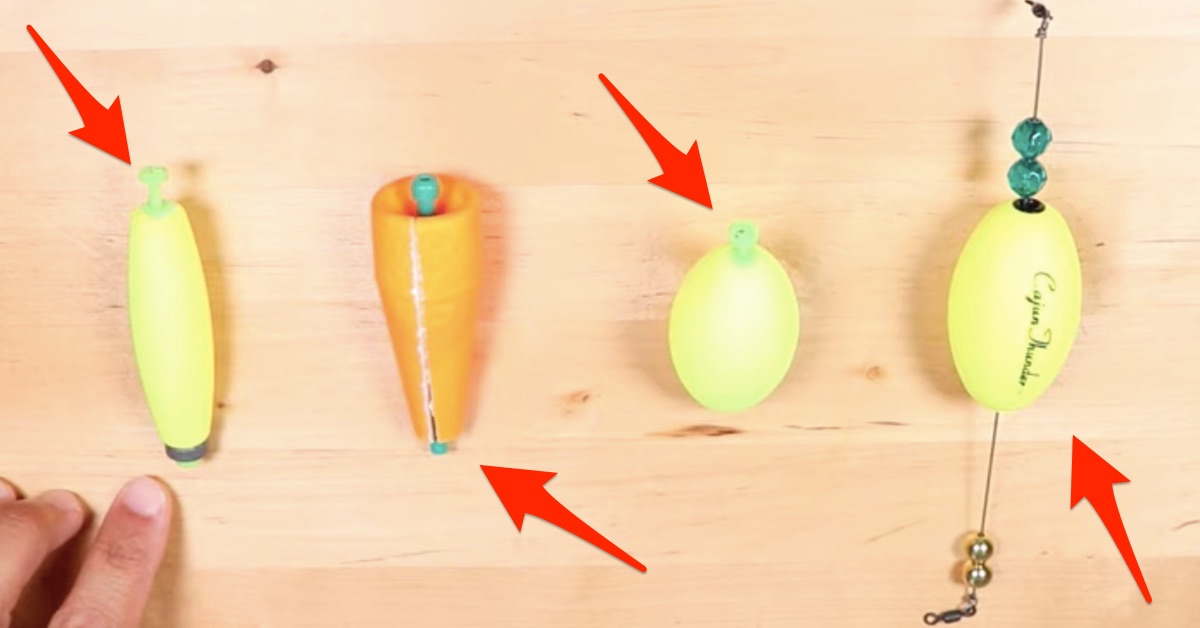Popping Corks: The Truth About Shapes, Styles & When To Use Each One
- By: Tony Acevedo
- on

It’s popping cork time!
There’s such a variety of popping corks out there…
You’ve got cigar style corks, egg style corks, cupped corks, slitted corks, weight corks, unweighted corks…
How do you know which one to choose?
It can be pretty overwhelming, right?
In this video, I’m going to share with you the advantages of each type of popping cork and which style to use and when.
Ready to become a popping cork expert?
Watch the video below.
Popping Cork Shapes & Styles [VIDEO]

Here’s a breakdown of each style of cork and when the best time to use them is:
Cigar Style Popping Cork
These corks are best used in clean water and windy conditions.
In clean water, fish are more skittish, so a big splash from a popping cork might scare them off.
These corks are more narrow than the other types, so they’re more aerodynamic, which makes them best for casting in windy conditions.
Cupped Popping Cork
These corks are good for murky water and windy conditions.
The cupped part makes a lot of noise, which is best for murky water or low light conditions when fish are relying less on sight and more on other senses to find food.
Also, it is relatively thin and aerodynamic as well, so it’s good for casting in windy conditions.
Egg Shaped Popping Cork
These are the biggest popping corks, so these corks are best for bigger lures or baits.
They also make more commotion in the water, so they’re better suited for murkier water conditions.
Weighted vs. Unweighted Popping Corks
Weighted corks are better for casting long distances, but they settle upright immediately.
On the other hand, unweighted corks don’t settle upright until the bait or lure is pulling one end down.
This can be an advantage because it will let you know when or if the bait has settled and when to start popping and retrieving.

Slitted Popping Corks
Popping corks with slits or clips to attach the leader have the advantage of being easy to adjust where on the leader they’re attached.
Ideally, your bait is just off the bottom, so if you’re fishing in two feet of water, and then it drops off to four feet, a slitted or clipped popping cork makes it easy to adjust the depth of your bait.
To learn more about slitted popping corks (and learn the most common mistakes and how to make them last longer), read this article:
Popping Corks With Metal Rods & Beads
Popping corks with metal rods and beads are best in dirty water or low light conditions because they make a lot of noise.
If this racket is spooking off fish, bare corks with rattles in them are a good step down.
Conclusion

I hope this clarified the wild world of popping corks for you!
Do you have a favorite style of popping cork?
Let me know in the comments below!
And if you know someone who loves using popping corks, please TAG or SHARE this with them!
P.S. Want the best local fishing spots, discounts on fishing gear, and to stay up to date with what and where the fish are biting right now? Join us in the Insider Club!
Do You Want To Quickly Find New Fishing Spots In Your Area?
Then you’ve got to see this private fishing club!
Here’s what you’ll receive today:
- Weekly fishing reports and TRENDS revealing where the inshore fish are feeding all year long
- Weekly “spot dissection” videos that walk you through all the best spots in certain areas
- Exclusive fishing tips from the PROS you can’t find anywhere else
- Everything you need to start catching fish more consistently (regardless if you fish out of a boat, kayak, or land).
Click here to join today.
Related articles:
Related categories:
STOP WASTING TIME ON THE WATER!
Do what the “SMART ANGLERS” are doing and join the Insider Club.
Here’s what you’ll receive today when you join:
- Weekly fishing reports and TRENDS revealing exactly where you should fish every trip
- Weekly “spot dissection” videos that walk you through all the best spots in your area
- Exclusive fishing tips from the PROS you can’t find anywhere else
- Everything you need to start catching fish more consistently (regardless if you fish out of a boat, kayak, or land).










Silent popping
Just drag the popper over the water surface without making pop sound. this becomes like a teaser and attracts Red Snappers and Barras.
Great tip!
Yea never really did a whole lot on popping corks but have caught some nice trout and reds on them a few times I mostly just used them when I was taking a break and eating my lunch I would throw one out usually the ones with a cupped face that had a metal rod running through it and beads for noise and a leader about 18 to 24 inches with a circle hook rigged live shrimp when I used to use live bait or now on occasion a gulp shrimp in fact now that’s the only time I use a gulp shrimp anymore if I’m fishing a plastic shrimp that ole chasebaits flick prawn in jelly color is my go to lure for shrimp caught a ton of fish on it all thanks to you because before I saw your video I never even heard of the chasebaits before then awesome bait that’s for sure great info Tony as usual thanks for all you do????
Of all of the types of corks I have found that, despite the generally murky water we have here in S.C., that I get more strikes by far when using the egg shaped corks. Of the ones I buy in the store I have had most success in the past with Cajun Thunder, but now almost always throw Four Horseman. They are effective and do make a lot of noise, but also the steel rod in the middle is super strong, unlike the Cajun Thunder which can get bent pretty easily. I may use the same cork for months, and have never had one bend up. But they are a little pricey.
Good stuff Dennis!
I get a lot of tangles and snags with the pre-rigged corks. I use bobber stops on a long leader with a weight and beads, so I can adjust the depth.
Try adding a 2-3 flouro or mono leader to your braid before tying to the top of the popping cork. Braid has a tendency to get wrapped easily. A small section of flouro or mon will prevent that. I learned from experience!
Yep that’s another downfall of the corks with the metal rod. As Them mentioned, adding a few inches of fluorocarbon between your mainline and the cork can help.
I like the cupped weighted corks. Longer casting distance & cover a larger area with lest casting. I look for the corks with a plastic insert in each end of the cork makes a better noise I think & less wear on the cork its self.
Good stuff Richard!
Thanks for the tips. Here on the upper Texas coast, we have stained water most of the time. I use Cajun Thunder and the H&H cupped ones with the pre-rigged leader.
No problem Jonathan!
I’ve recently tried the Four Horsemen popping corks for the first time, based on the recommendation of Kalon Johnson (aka the Redfish Assassin) in his Salt Strong podcast interview. I really like them. They’re best suited for murky water since they’re specifically designed to make a lot of noise.
I haven’t tried them yet but will soon!